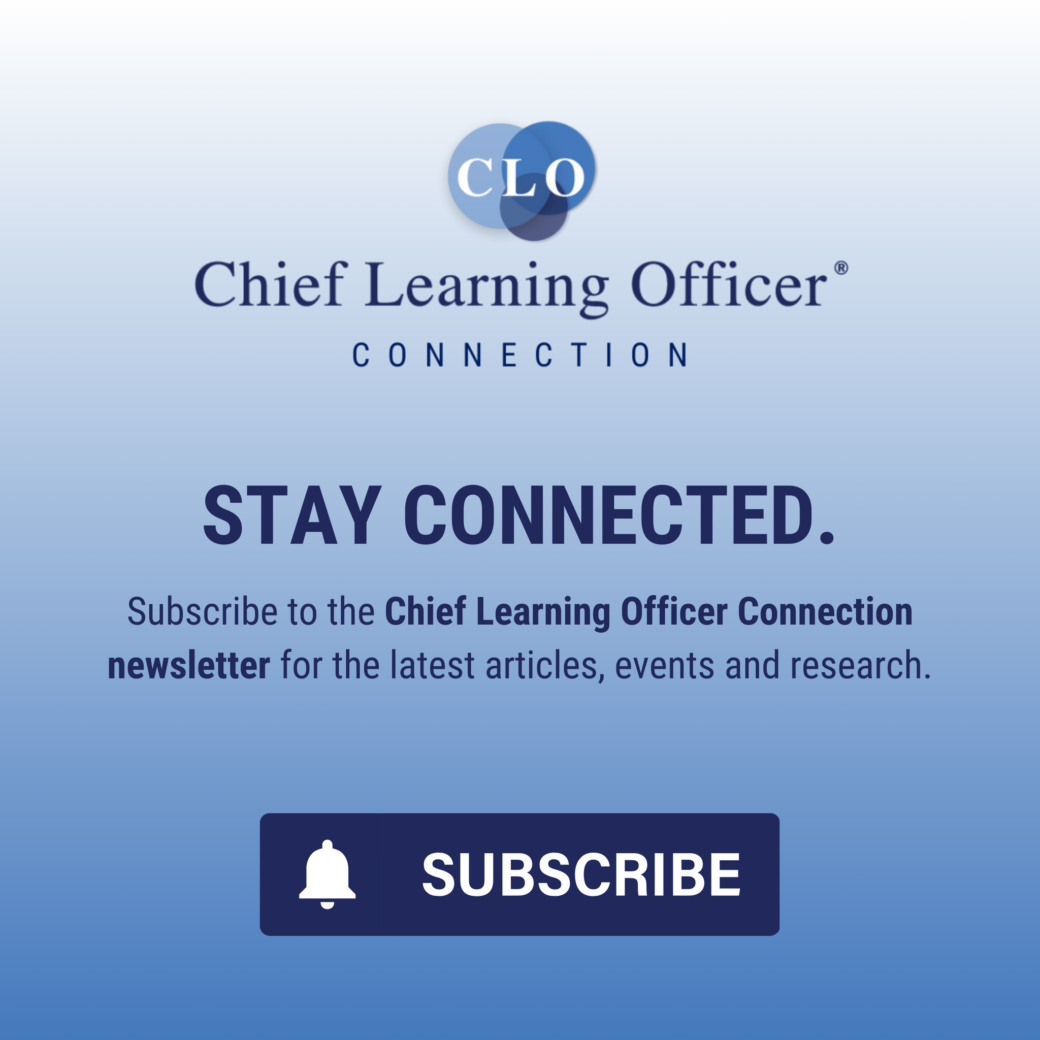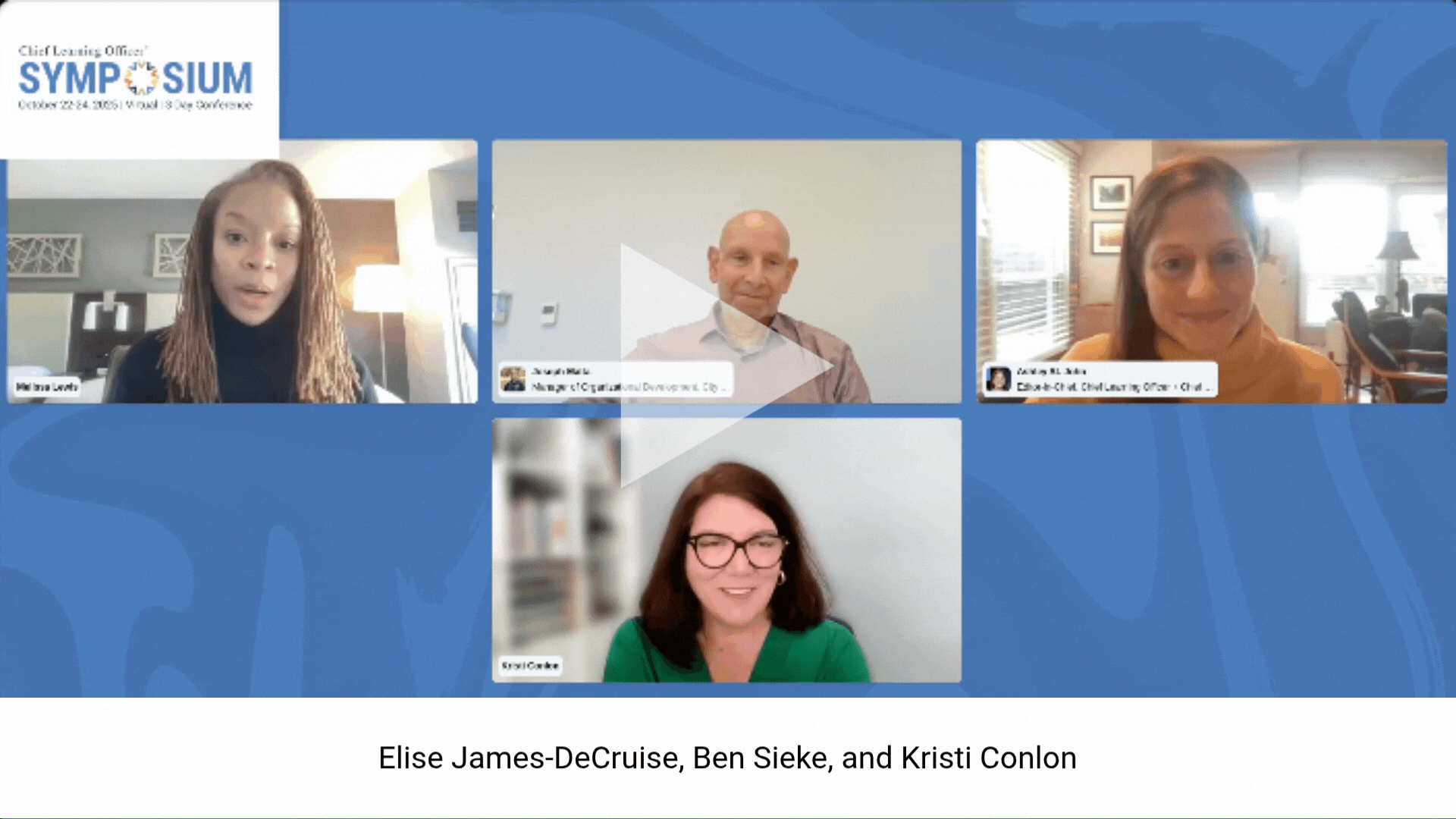After nearly two decades of building manager academies that don’t deliver results, I finally stopped. Here’s why and what I discovered works instead.
I spent years chasing the elusive goal of scalable manager development, often building a manager academy: the one-stop shop hub for learning and development. I added static, expensive content libraries. I made the content shorter—even bite-sized. I populated these academies with adaptive e-learning paths and launched them to managers who didn’t have time, and worked hard to convince them it’s what they needed most. I built the best versions of these academies. Each failed.
Why? Because managers don’t learn to manage from watching videos, no matter how short the videos are. They learn from doing, failing and doing again with guidance, feedback and accountability. This has been true since we invented the role of “manager” and started building systems that promote better management.
After co-authoring recent research, reflecting on what’s working today and speaking with other experts in learning, a blunt truth emerged: If you are building tiered manager academies or investing in off-the-shelf LMS content libraries—stop. You’re likely wasting time and money. A static course will never solve a dynamic problem. Manager development isn’t a content problem; it’s an enablement systems problem.
Manager training is broken
This research, spanning over 120 managers across industries, revealed that:
- Only 50 percent of managers received any formal training.
- Just 21 percent had meaningful, ongoing support.
- A staggering 80 percent said their training had limited impact.
Much of the training available today is not aligned with real challenges managers face. In fact, fewer than one in 10 managers said their training matched the actual requirements of their role. As one manager told us, “I started with only minimum knowledge of the job as a whole… I wasn’t 100 percent sure what I was doing myself.”
This was echoed in 2025 research from the Center for Creative Leadership, which identified common challenges for new managers, including “managing others who were formerly peers, or employees who are older than they are — and just generally gaining respect as a new, first-time people leader.”
And yet, companies keep throwing resources at outdated approaches that aren’t laser-focused on solving these real, predictable problems.
So, it’s time for a reset.
The companywide LMS era is over
For years, learning and talent leaders have clung to the idea that the perfect LMS, the right content library and an adaptive path would finally deliver manager development at scale. But the results are in. The market has thinned with only a few publicly traded traditional LMS companies still out there, and managers are voting with their time. Ask yourself: When was the last time you had to tell managers to spend less time in the company LMS?
Fewer than 28 percent of managers receive any training after their first six months on the job. And when it does happen, it’s often generic content that doesn’t align with company expectations or business outcomes. As Satu Salminen, VP of Talent Management and Development at ZoomInfo, said, the one-and-done “old-school approach doesn’t meet the speed of our fast-moving orgs.”
Even tech giants are acknowledging the shift. In June 2025, Google shut down most of its internal Grow platform and replaced over 500,000 course listings with targeted AI tools tied to business priorities. Google isn’t alone. Companies are moving swiftly to cut “nice-to-have” learning in favor of more relevant, embedded support.
What managers actually need
Put plainly: Managers don’t need more access to generic content. They need better systems of support. My research identified three high-impact factors:
Live, tailored learning experiences: Workshops, coaching and hands-on practice are three times more effective than asynchronous learning. Managers crave the opportunity to learn with others, apply skills in real time and get immediate feedback.
Clear expectations: Recent Gartner research identified that over 40 percent of managers reported that training had little to no alignment with company expectations. When companies define what great management looks like and build development around those expectations, managers are 1.4 times more likely to find the role manageable.
Continuous development: Being a manager isn’t a one-time event. Yet only a fraction of companies provide training beyond onboarding. The best organizations build systems that support growth during key transitions like taking on a new team, receiving tough feedback or navigating disruption and change.
A systems approach to manager enablement
So what does a systems approach look like in practice? At Axonius, we’re building it step by step. As the head of talent development at a fast-moving cybersecurity company, I’ve seen firsthand that management isn’t a skill you learn once; it’s a capability built over time. That’s why we’re developing a manager enablement system—a network of support embedded into the daily interactions, team rhythms and performance moments where managing happens.
Here are three ways to do it:
1. Identify and invest in moments that matter
Most manager development fails not because it’s irrelevant but because it’s poorly timed. Our research and interviews confirm that managers benefit most from targeted support during transitions: new roles, new teams, feedback moments or key business shifts. Start by mapping out these key moments and designing experiences around them. Think onboarding for new managers, just-in-time skill sprints tied to performance cycles or one-on-one coaching triggered by team health data.
At Axonius, we’re experimenting with highly tailored support for new people managers. Instead of pushing them through a generic e-learning path, we offer a flexible, context-specific experience that meets them where they are. Through timely Slack-delivered tools and expert external coaching, managers get just-in-time, highly personalized transition support that accelerates their speed to productivity in our fast-paced environment.
On day one, a sequenced Slack message campaign introduces our people manager expectations. By week four, new managers join a live orientation focused on early challenges and tools to address them. Afterward, a brief self-assessment connects them with an external coach for a targeted five-session sprint to build confidence, accelerate team connection and drive early performance.
It’s part of a broader shift happening across the field. As Michael Colligan, director of global talent management, learning and leadership development at Veeam, put it, there’s a move “towards strategic interventions based on internal data trends.” At Veeam, manager development is no longer built around self-serve, topic-based learning but around targeted, live experiences to build skills identified in their job architecture.
2. Increase the quantity, quality and frequency of feedback
Feedback isn’t just a performance management input. It’s the single most powerful tool at any company’s disposal for development. But only if it’s timely, specific and tied to clear expectations. High-quality feedback helps, but even mid-quality feedback, if frequent, can drive learning.
Effective manager enablement systems include:
- Clear expectations for what good looks like.
- Mechanisms to feed feedback from direct reports and peers.
- Short coaching and reflection loops to help managers quickly adapt.
The idea isn’t groundbreaking. But low-stakes, timely feedback at scale is hard to come by. At Axonius, we aren’t creating a “signature program” for every level of leader. Instead, we’re spending time testing a generative AI tool that lets managers practice crucial conversations. The goal isn’t to turn managers into perfect feedback machines; it’s to shorten the distance between doing and learning, so they improve their ability in an afternoon instead of over a lifetime.
The tool allows managers to rehearse high-stakes conversations in a low-stakes environment. In under 15 minutes, managers engage in a simulated voice-based conversation tailored to one of our most common growth challenges, like delivering feedback on stalled performance or navigating a career development discussion. Immediately after, they receive a feedback report and curated transcript highlights, showing not just what they said, but how they could say it better. This allows for rapid reflection, iteration and tightening the loop between insight and action.
This same philosophy shows up at ZoomInfo, where feedback isn’t an annual ritual but a continuous loop. As Satu Salminen, AI transformation lead and former VP of talent management and development, put it: “We’re focused on building solutions, not programs.”
At ZoomInfo, managers provide lightweight, monthly feedback to their teams, delivered in a way that makes it actionable. This rhythm helps leaders spot trends early, so they can help employees adjust in real time, and keep pace with the demands of a fast-moving environment.
3. Tailor, don’t template content
One-size-fits-all training never really fits anyone, even when delivered in a highly customized white label experience. A world-class “Giving feedback 101” module will never answer a manager’s real-world question, “What do I say when my employee asks me something and I don’t have the answer?”
Companies must build manager enablement systems that are:
- Anchored in definitions of manager excellence that managers are accountable to, in their cultural context and environment.
- Responsive to current business context and help the company anticipate future team dynamics.
- Informed by internal data trends (attrition, engagement, team performance).
At Axonius, we’re piloting an AI chat prompt that helps managers reflect, prepare and practice critical conversations. With a few simple inputs—like the topic of a conversation or the challenge they’re facing—managers receive tailored, practical recommendations. Instead of offering generic scripts or classroom-based solutions, the chatbot nudges them toward in-the-flow-of-work actions, which reinforces our belief that growth happens through experience, not instruction. It’s not a standalone tool; it’s one node in our manager enablement system, built to reduce the time between insight and action.
The same principle applies to management development systems. Adam Lancaster, who has held learning leadership roles at Coupang, Meta and the Financial Times, points to the fact that the core purpose of manager development hasn’t changed, but the stakes for content relevance have. Solutions have to be “hyper-relevant to the environment” they’re deployed in. “You have to stress test [everything and ask] what does it look like here?”
Manager development is a business system, not a learning program
While many companies say they care about developing managers, most are still throwing solutions at the problem instead of designing for outcomes. Learning leaders must stop treating manager development as a product to launch and start treating it as a system to build.
Manager enablement systems can:
- Focus on the relational and emotional realities of managing people.
- Provide live, tailored learning experiences tied to performance moments.
- Embed development into tools and workflows.
- Hold managers accountable through clarity, feedback, and shared standards.
Manager development isn’t about what is launched, it’s about how work changes to deliver real outcomes and make the job of managing better. The age of the LMS-first approach is over. You can create a manager enablement system that is timely, tailored and tightly connected to the realities of their work. Don’t ship another online manager academy.















